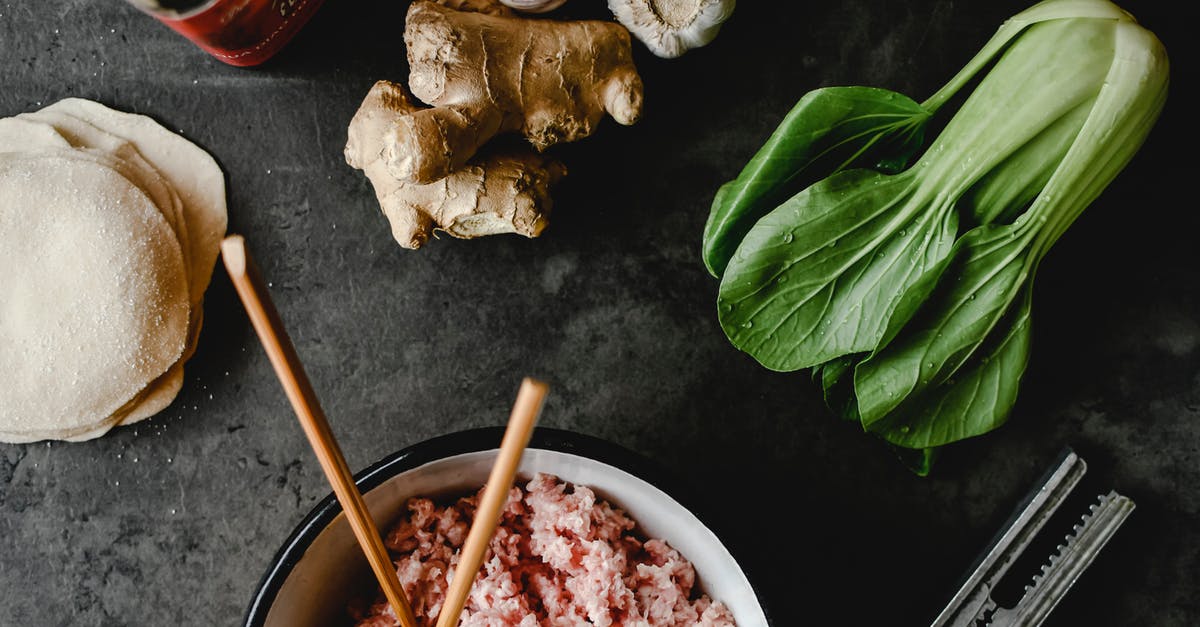What is the theory of a meat marinade?

The most common types of recipes I see for meat marinades are to combine 1/4 to 1/2 cup of vinegar with salt and spices. Then put this in a bag with the pork tenderloin (or whatever the meat is) for a day or two. Then the meat is rotisserie grilled or steam cooked.
However, a different style seems to be to mix the spices with oil and just baste the meat with the infused oil. Can that really be considered a marinade?
Both of these methods seem to conflict with the traditional idea of a marinade, which according to my education is 3 parts vinegar, to 1 part oil.
As far as the seasoning is concerned, the most common pattern seems to be garlic, pepper and parsley. However, some traditional marinades also include vegetables. Is the choice of spices completely open ended or are there known combinations that go well with pork?
Best Answer
First, there are two terms for 'soaking a piece of meat in liquid' and they are often used interchangeably and/or in error:
- Marinate: A surface treatment of meat in which the meat becomes coated with a flavorful liquid called a marinade (the sauce is the 'marinade', the soaking is 'to marinate', though marinade is often used as the verb).
- Brine: A deep penetrating treatment of meat in which meat is submerged in a saline (salt) solution (related topics would include rubs and glazes)
Chemically these are two very different actions but colloquially they are often confused. The maximum effect of a marinade can be achieved in a matter of hours and is strictly a 'surface treatment'. A brine is always salt based and takes anywhere from hours to days to reach maximum effect. The first description you provide is actually for a brine, as evidenced by the salt content and duration of the soak. The 'different style' you present is an actual marinade. For a more in depth discussion of this see:
The Secrets And Myths Of Marinades, Brinerades, And How Gashing Can Make Them Work Better
Recipes for either are varied and wide ranging, and I will reemphasize, commonly mislabeled (I'm not trying to be a grammar nazi here, but any discussion of the 'theory' requires a proper distinction)
As for that 'theory'...there are many opinions on this subject and I'll try to remain agnostic for this answer. Marinades usually breakdown into three components: fat, acid, and spice/seasoning the exact ratio is the subject of great debate but a good starting point is 3:1 fat-to-acid and season 'to taste'. Your fats can be one or more (melted butter and olive oil is a personal fave) as can the acids vinegar, buttermilk, citrus juice, beer, wine... (for marinades alcohol serves as an acid). Beyond that season as you please. Chili powder, red pepper, paprika to get a 'spicy' marinade. Rosemary, dill, garlic, provide rich flavors. So too sugars(white/brown/honey/molasses) will add depth to the flavors and will caramelize and enhance the maillard effect.
As for pork, in particular, using apple juice (or hard cider) as the acid is nice start, honey (or other sweets) are a good compliment. I personally like clove as a spice for pork tenderloin.
From here, let your imagination and your palate be your guide. Here are a few useful links to look a little deeper if you please:
Beyond this...Google is your friend.
Pictures about "What is the theory of a meat marinade?"



Quick Answer about "What is the theory of a meat marinade?"
Most marinades include an acidic ingredient because acids start to break down proteins and the cell structures of foods. By breaking down the proteins in this way, flavors from the marinade can more easily penetrate the food and the structural changes makes the food more tender.What is the science behind marinating?
Marinades often use an acid (like vinegar or citrus juice) or an enzyme (like mango, papaya, or kiwi fruit) to enhance flavors and change surface texture. The acid or enzyme in a marinade causes the meat's tissue to weaken on the surface but must be used minimally and not for extended periods of time.What is the purpose of marinate the meat?
Marinating is an effective way to enhance the flavor, add extra moisture, and tenderize meat before cooking. In addition, a good marinade can help make leaner cuts less dry and make tougher pieces of meat more succulent.What are the 3 main components of a marinade?
A typical marinade is made up of three essential components: an acid (such as vinegar, wine, or citrus), an oil (such as olive oil or sesame oil), and a flavouring agent (such as herbs and spices). These elements work together to transform the taste and texture of your dish in different ways.Does marinating do anything?
Sources: Stack Exchange - This article follows the attribution requirements of Stack Exchange and is licensed under CC BY-SA 3.0.
Images: Eva Elijas, ROMAN ODINTSOV, FOX, Umut Ülgi
